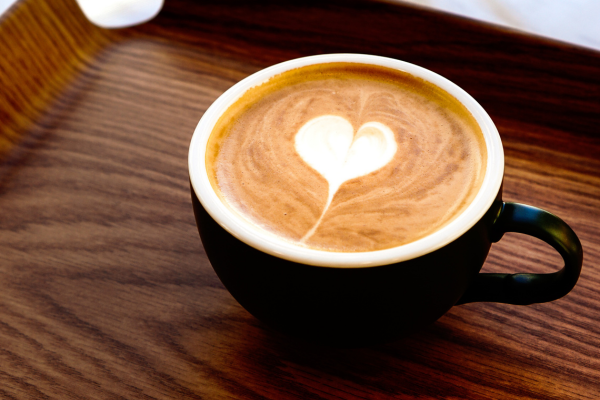If you’re passionate about coffee, chances are you’ve come across the terms hot brew and cold brew—two popular methods with distinct preparation techniques, flavor profiles, and purposes. While both result in a caffeinated beverage, the similarities stop there. Understanding the key differences between hot and cold brew coffee can help you choose the right method for your mood, schedule, or taste preferences.
In this article, you’ll learn how hot and cold brews differ in terms of brewing process, flavor, caffeine content, acidity, and when it makes the most sense to choose one over the other.
What Is Hot Brew Coffee?
Hot brew refers to any traditional method where hot water is used to extract flavor from coffee grounds. This includes drip machines, pour-over, French press, AeroPress, espresso, and moka pots. Water temperatures typically range between 90°C and 96°C (195°F–205°F) to ensure efficient extraction.
Hot water quickly dissolves the soluble compounds in coffee, including oils, acids, and aromatic molecules. This leads to a coffee that is more aromatic, complex, and often sharper in acidity.
Popular hot brew methods:
- Pour-over (e.g., V60, Chemex)
- French press
- Espresso
- Drip coffee machine
- AeroPress
- Moka pot
These methods produce coffee within a few minutes, making them fast and convenient for daily use.
What Is Cold Brew Coffee?
Cold brew is made by steeping coarsely ground coffee in cold or room temperature water for a prolonged period—typically 12 to 24 hours. The process extracts flavor slowly, resulting in a concentrated, smooth, and less acidic drink.
Unlike iced coffee, cold brew is never exposed to heat during brewing. The lack of heat leads to lower extraction of certain acids and bitter compounds, which gives cold brew its signature mellow taste.
Cold brew is usually diluted with water, milk, or plant-based alternatives before serving and is often enjoyed over ice.
Brewing Time and Temperature
Hot Brew
- Brew time: 2–6 minutes (depending on method)
- Temperature: ~95°C (203°F)
- Fast extraction
- Best consumed immediately for peak flavor
Cold Brew
- Brew time: 12–24 hours
- Temperature: room temp or refrigerator (~4–25°C)
- Slow extraction
- Can be stored for 5–7 days in the fridge
Hot brewing is about immediacy and complexity, while cold brewing is about patience and smoothness.
Flavor Profile Comparison
Hot Brew
- Brighter, more acidic
- Strong aroma
- Complex flavor layers
- Ideal for highlighting fruity or floral notes in lighter roasts
Cold Brew
- Smoother, less acidic
- Lower bitterness
- Often sweeter and fuller-bodied
- Emphasizes chocolatey, nutty, and caramel notes
Because cold brew minimizes acidity, it’s a great option for those who find hot coffee too sharp or harsh.
Caffeine Content
Caffeine levels vary based on brewing method, bean type, and serving size.
Cold Brew
- Often has more caffeine per ounce in its concentrate form
- Typically diluted before serving, so the caffeine per cup is similar to or slightly higher than hot coffee
- A standard cold brew concentrate can contain 150–250mg of caffeine per 8 oz serving, depending on the ratio used
Hot Brew
- Drip or pour-over coffee contains around 95–120mg per 8 oz
- Espresso shots (1 oz) can have 60–80mg
So, if you’re drinking undiluted cold brew, you’re likely consuming more caffeine than with a typical hot brew. However, if diluted properly, the caffeine levels are roughly comparable.
Acidity and Digestibility
Acidity plays a big role in how coffee tastes and how it feels on the stomach.
Hot Brew
- Has higher levels of chlorogenic acid
- Can be more acidic and sometimes harsh for people with sensitive digestion
- Enhances fruity and citrusy notes
Cold Brew
- Naturally low in acidity
- Gentler on the stomach
- Better for people prone to acid reflux or heartburn
For those with gastrointestinal sensitivity, cold brew is often the better choice.
Shelf Life and Convenience
Cold Brew
- Can be made in large batches
- Stores well in the fridge for up to a week
- Ideal for busy schedules or prepping ahead
Hot Brew
- Best when served fresh
- Loses aroma and complexity after 30 minutes
- Less suitable for storing and reheating
If you want to brew once and enjoy for days, cold brew offers more convenience.
Environmental and Equipment Considerations
Hot brew methods typically require more tools: kettles, machines, filters, or stovetops. Some also consume electricity.
Cold brew requires minimal equipment. A jar, water, and coffee are all you need. Plus, it uses no electricity and generates less waste if you use reusable filters.
However, cold brew does require more planning and fridge space, while hot coffee is easier to prepare on demand.
When to Choose Each Method
Choose Hot Brew if:
- You want your coffee quickly
- You enjoy complex flavor profiles with bright acidity
- You’re using light to medium roast beans
- You drink coffee in the morning and want a fresh, hot cup
- You enjoy experimenting with brewing techniques
Choose Cold Brew if:
- You prefer smooth, mellow coffee
- You need lower acidity for digestion
- You like brewing in advance and having coffee ready-to-go
- You enjoy iced or cold coffee all year
- You want a more versatile base for lattes and custom drinks
Final Thoughts: Find Your Ideal Brew
Both hot and cold brew offer unique advantages. Hot brew brings out complexity, sharpness, and expressive aromas—perfect for those who appreciate nuance and warmth. Cold brew, on the other hand, is about smoothness, convenience, and all-day refreshment.
Rather than choosing one method forever, let your taste, mood, and schedule guide you. Enjoy hot coffee on a crisp morning, and cold brew on a busy afternoon or hot summer day. Better yet, experiment with both and discover how each method transforms your favorite beans.
Coffee isn’t just a beverage—it’s an experience. And the more you understand each brew style, the more joy you’ll find in every cup.

